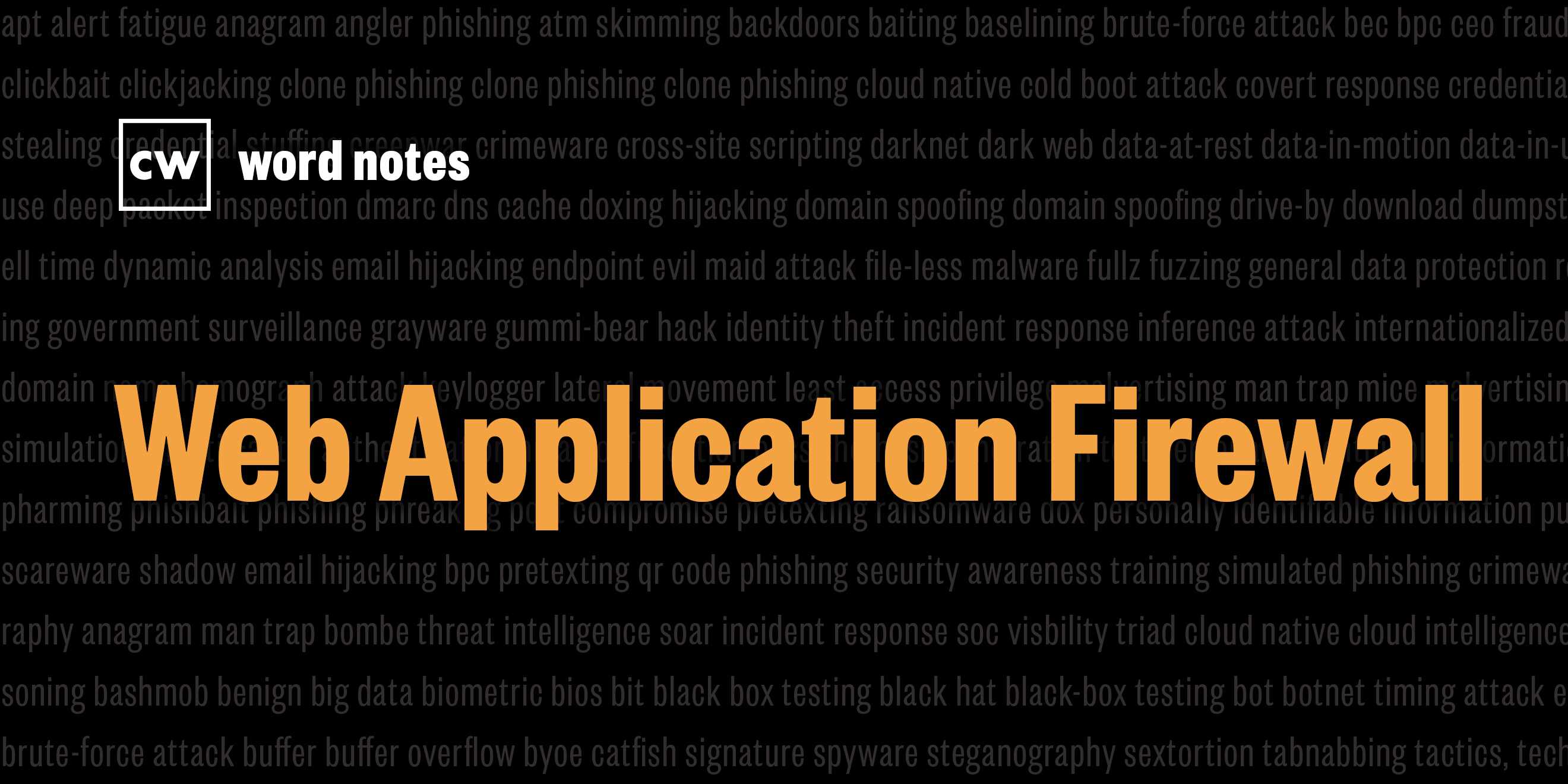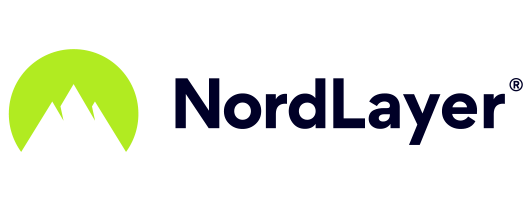
Web Application Firewall (noun)
Rick Howard: The word is: Web Application Firewall
Rick Howard: Spelled: Web as in the internet, application as in a software program, and firewall as in a barrier between two networks that can limit network traffic between the two sides.
Rick Howard: Definition: A layer seven firewall designed to block threats at the application layer of the open system interconnection model, the OSI model.
Rick Howard: Example sentence: With a web application firewall or WAF, firewall administrators can make rules like the marketing group can go to Facebook, but the sales group can't.
Rick Howard: Origin and context: In 1988, Jeff Mogul, Brian Reid and Paul Vixie, working for Digital Equipment Corporation, conducted the first research on firewall technology. This was the first generation of firewall architectures. Between 1989 and 1990, Dave Presotto and Howard Trickey of Bell Laboratories pioneered the second generation with their research in circuit relays.
Rick Howard: They also implemented the first working model of the third generation firewall architectures, known as application layer firewalls. Between 1990 and 1991, Gene Spafford of Purdue University, Bill Cheswick of Bell Labs and Marcus Ranum independently researched application layer firewalls. These eventually evolved into next generation firewalls many years later.
Rick Howard: In 1992, Digital Equipment Corporation shipped DEC SEAL, the first commercial firewall and include included proxies developed by Marcus Ranum. In 1994, Check Point Software released the first stateful inspection commercial firewall, a layer three firewall. Layer three refers to the OSI model, meaning that firewall administrators can make rules based on IP addresses, ports, and protocols.
Rick Howard: In 1994, William Cheswick and Steve Bellovin published 'Firewalls and Internet Security: Repelling the Wily Hacker," the first book on firewalls as a technology. They called it a circuit-level gateway and packet filtering technology. Interestingly, their ideas came from the desire not to keep intruders out of their networks, but to keep employees from going to bad places on the internet.
Rick Howard: Palo Alto Networks launched the first next-generation firewall in 2007, a firewall that not only does stateful inspection at layer 3, but more importantly, allows rules at the application layer, layer seven. Firewall administrators could not only block network traffic to and from bad IP addresses, but also could block access to applications tied to the authenticated user.
Rick Howard: By the 2010s, some firewalls had morphed into giant orchestration engines. In other words, instead of deploying multiple independent security tools inline at the perimeter that the InfoSec teams had to manage and orchestrate separately, the next generation firewall became a swiss army knife of security tools; one box, either hardware or software, that could do everything: layer 3 policy, layer 7 policy, intrusion detection, anti malware, XDR, etc. By the late 2010s, the Secure Web Gateway emerged as a simpler firewall that abandoned the orchestration engine idea and just performed layer 7 policy functions.
Rick Howard: But specifically for Endpoint user web traffic. Firewall administrators can make rules for URL filtering, malicious-code detection, and application controls for popular web-based applications, such as instant messaging and Skype. In contrast, Web Application Firewalls can do most of the same things as Secure Web Gateways, plus some basic heuristic and anomaly detection to prevent exploitation of application vulnerabilities.
Rick Howard: Nerd reference: In 2015, Bill Cheswick presented at the Vintage Computer Federation Conference and talked about some of the early days of computer security when he took a job at the famous Bell Labs in the 1980s and worked for some computer science legends like Dennis Richie, the co-creator of the C Programming language in the Unix operating system, written in C, with colleagues Ken Thompson, Brian Kernighan and Rob Pike, and he talked about how his experiments with proto firewalls protected Bell Labs from the infamous Morris Worm in the late 1980s.
Bill Cheswick: And in 1987 I said, I wonder if I could work at Bell Labs. Could this, could I do this? I'm, I'm an IT guy. I could go be janitor for Dennis Richie, how cool would that be? And I applied, and, uh, the interview for the day involved eight people, most of whom you, many of you have heard of. Brian Kernighan, Rob Pike, Ken Thompson, Dennis Richie. Uh, and a couple others, my future bosses and I decided even if at the end of the day they decided I was a jerk and they never wanted to see me again. It was a pretty remarkable day. And it turns out they hired me and I started at the end of 1987. I was working there for three weeks and I said, well, I've started work, I volunteered to work as postmaster, which is kind of like volunteering to be proctologist. Um, it's a thankless job because if you get it right, nobody notices, and if you don't, they're really pissed off with you and I went up to the postmaster, Dave Presotto, and I said, "This email seems like a wave of the future. I wanna learn something about it, I'll be postmaster." He said, "Okay, you got it." I also took over a prototype firewall he'd put up about a year before and started running it. And I, at about a year later, the Morris Worm came out and our firewall stopped it.
Bill Cheswick: In fact, I woke up the morning, the Morris Worm hit the internet and a friend of ours had called the house and said, "There's something bad on the internet, you might want to check it out" and I went into work, and there was Peter Weinberger on the phone, say, calling various places and saying, "Did you get the worm, we didn't ha ha" and of course it was my firewall that was keeping it out.
Rick Howard: Word notes is written by Tim Nodar, executive produced by Peter Kilpe, and edited by John Petrik and me, Rick Howard. The mix, sound design, and original music have all been crafted by the ridiculously talented Elliott Peltzman. Thanks for listening.

